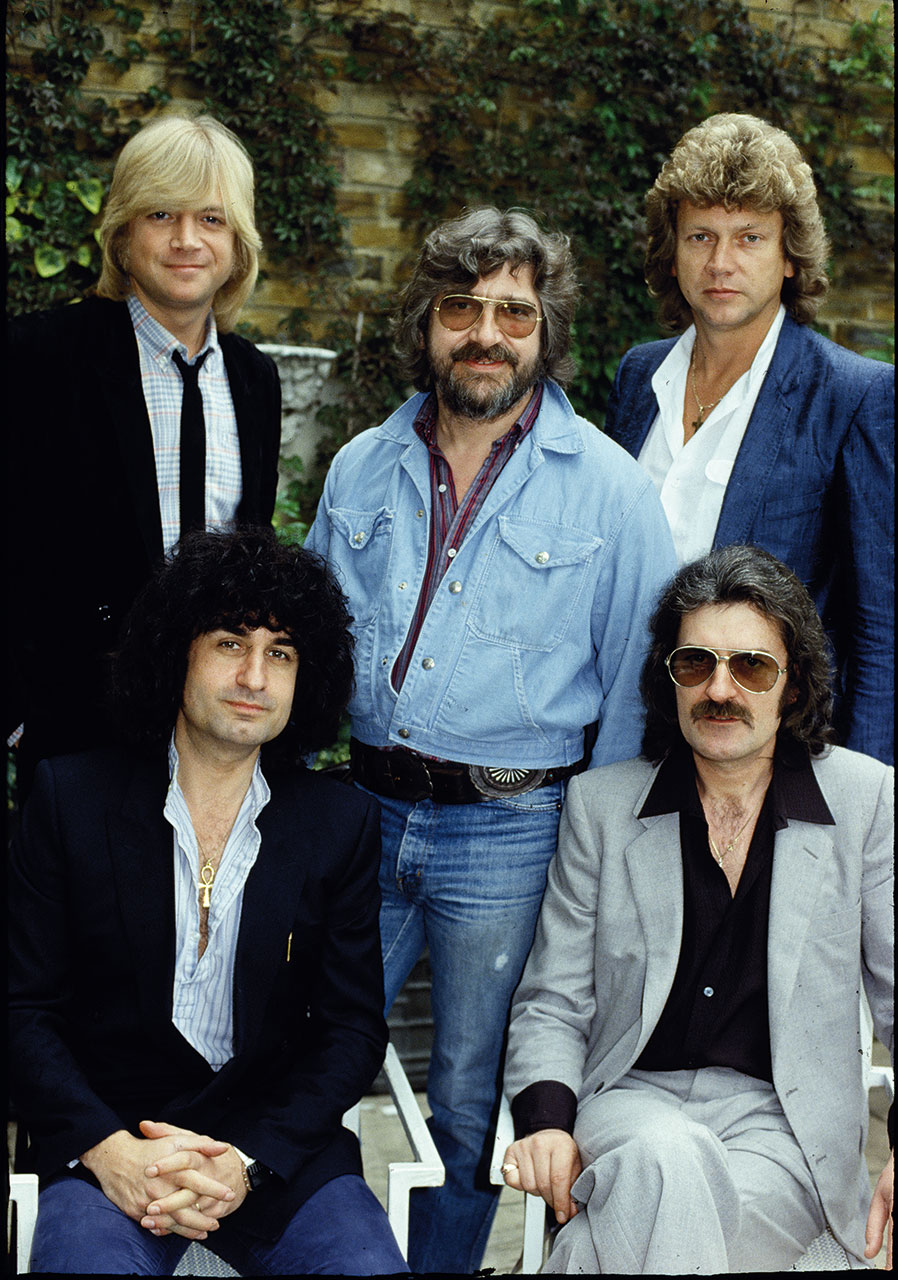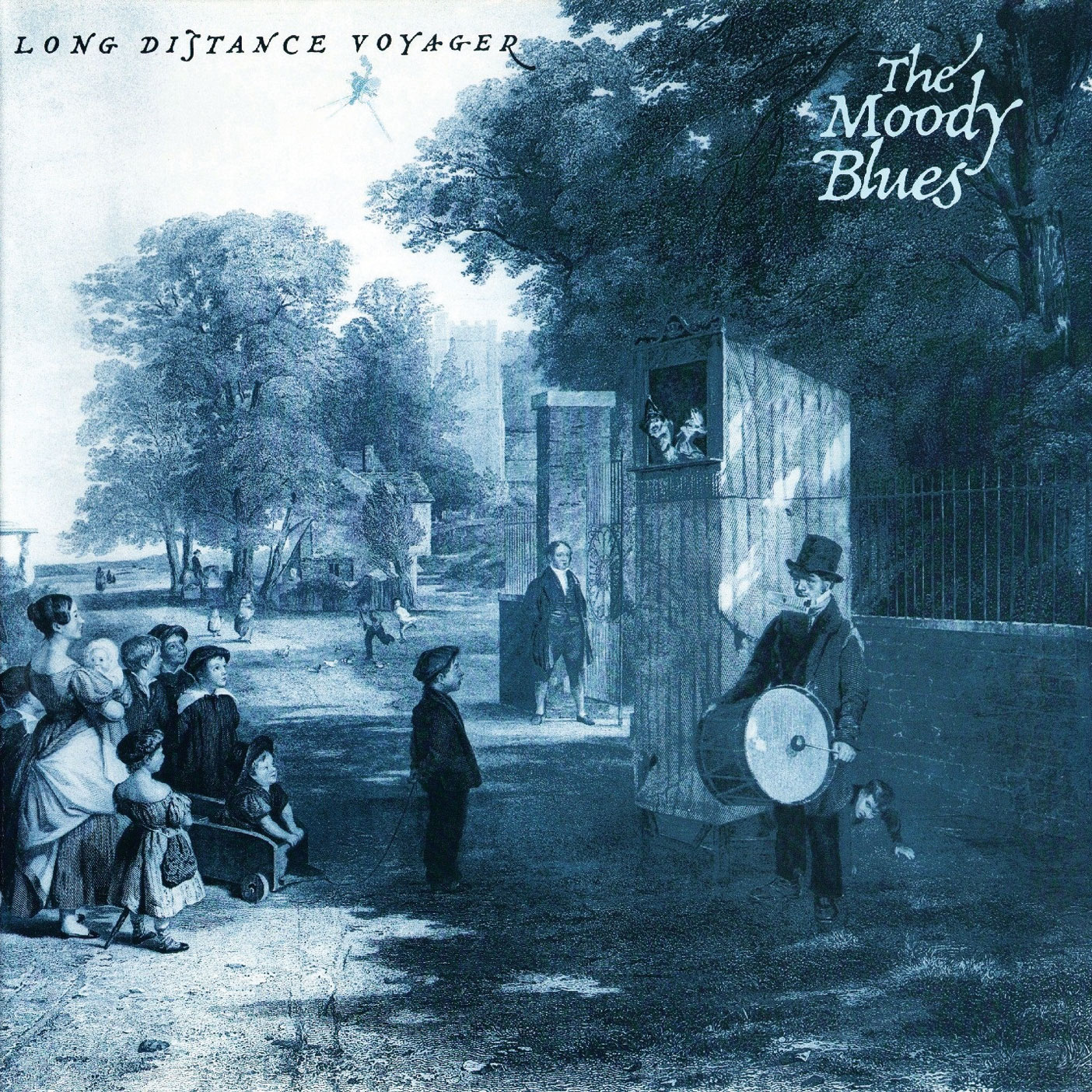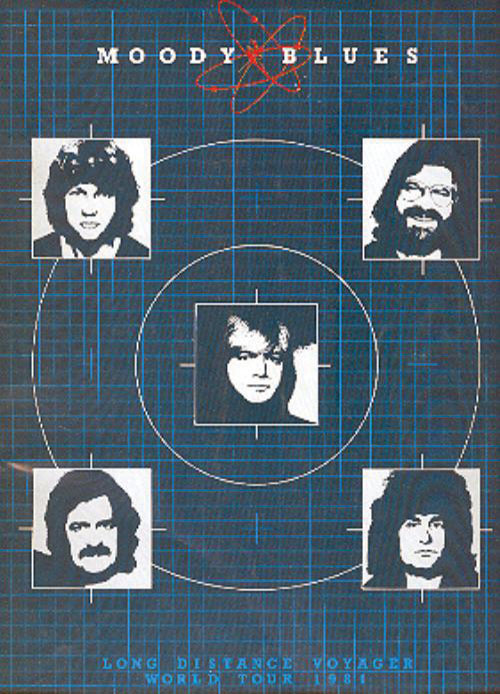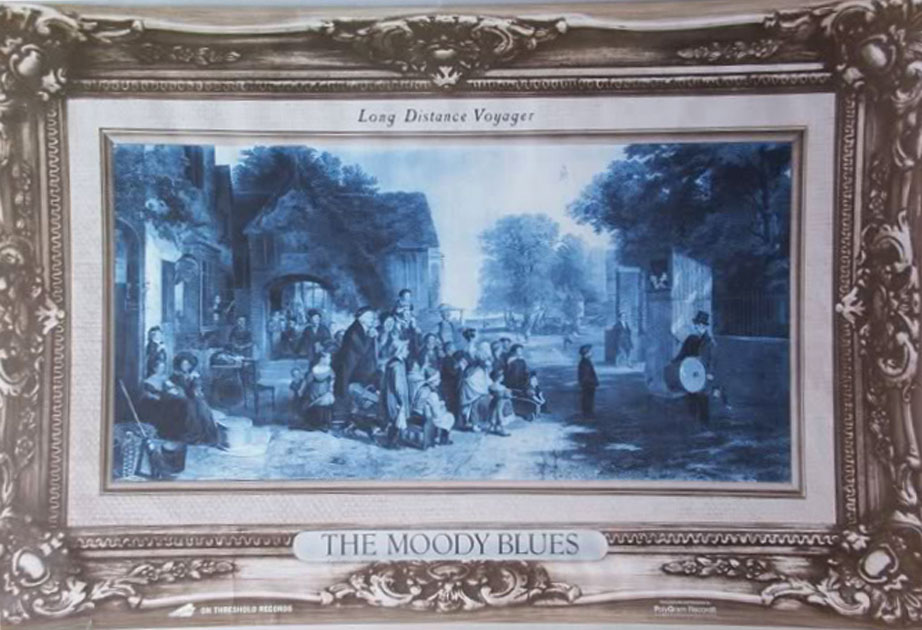Did Patrick Moraz Win His Suit Agains the Moody Blues
How Long Distance Voyager revitalised The Moody Blues

It was the anthology that firmly brought The Moody Blues into the 1980s. It was also the one that precipitated a potentially damaging courtroom case between the band and a former member, while likewise seeing them finally recording in their ain studio, nearly a decade after it was built.
The album was Long Distance Voyager, and it gave the Moodies a massive commercial and creative boost, proving their decision in 1977 to reunite after a 3-yr hiatus was a apparent move.
"The Octave album [which was released in 1978] was a difficult one to make," recalls the band's bassist and vocalist John Gild. "We began it at the Record Institute in LA, but it burned down. So nosotros moved to Indigo Ranch Studios, just had a lot of trouble in that location."
Adding to the band's bug, keyboard histrion Mike Pinder decided he didn't want to bout any more, forcing them to bring in one-time Yes man Patrick Moraz when the Moodies went out on the road in support of Octave. And he was the obvious choice to supercede Pinder in the studio for the side by side album.
"Patrick brought a greater awareness of modernistic technology into the band," says guitarist and vocalist Justin Hayward. "He introduced usa to programming, sampling and what computers could do in general for our music. Our personal relationship with him wasn't great, just at that place's no doubting he did a lot of brilliant things musically."
The loss of founder member Pinder wasn't the simply radical change facing Lodge, Hayward, Ray Thomas (flute/harmonica/vocals) and Graeme Edge (drums). Long-time producer Tony Clarke, who had worked on every Moody Blues album since 1967's Days Of Hereafter Passed, likewise decided to bow out.
"Nosotros were all having personal problems at the time of Octave," sighs Lodge. "So, Tony decided to walk abroad. The guy I immediately thought of to produce us was Pip Williams. I'd worked with him on the song Threw It All Away, which was the B-side of my 1980 solo single Street Café. I liked his approach because he added some rock'n'roll to what we did. Pip had worked with Status Quo, and he brought that border into what we were doing."
Hayward also feels that engineer Greg Jackman played a crucial role in the studio.
"I met Greg when I was doing some recording at RAK Studios in London. He'd been closely associated with Mickie Virtually, and we felt he would exist a great partner for Pip on the product side. Greg had a very modern approach to recording. This was, for case, the commencement time we'd ever used timecode. That meant nosotros didn't have to get things spot on all the style through. If I fabricated a mistake, then it could be hands corrected without facing having to do the entire sequence all over again."

For the first time, the ring also used their own Threshold Studios in Cobham, Surrey to practice a Moody Blues anthology.
"Justin and I had done the Bluish Jays album there in 1975," says Club. "And I'd washed my Natural Avenue solo tape there two years later. Merely we'd just non done a Moodies album at the place."
"There's a unproblematic reason why the band hadn't recorded at that place before," chuckles Hayward. "It might have been congenital in 1972, merely it hadn't been set up for us to go in and do a Moody Dejection record. Now it was, so information technology seemed daft to spend coin elsewhere when we had this facility bachelor."
The band were originally due to start recording in October 1980. Simply in the end, this was delayed by iv months, due to the major changes outlined earlier.
"We just had to rethink what we were doing," admits Lodge. "And we just weren't fix to go into the studio by the time we were supposed to be. However, I believe this worked in our favour considering when we did get things finalised, the songs and our mental attitude couldn't take been meliorate."
The album was recorded in a two-month catamenia, with both Hayward and Club giving enormous credit to Williams for the way information technology comes across.
"Pip worked so well with the states," reveals Lodge. "He made the entire process painless, and also gave the music a real lift."
"What Pip did was update The Moody Dejection without irresolute usa," adds Hayward. "We are a band who are difficult to produce, all the same strangely easy to engineer. Just Pip got beyond the problems and revitalised us. It was such a breath of fresh air afterward Octave."
It's often been debated every bit to whether Long Distance Voyager is a concept anthology at all. But it turns out that the definitive answer to this question from the band themselves is… well, there is no definitive answer.
"Equally far every bit I'thousand concerned, in that location is a loose concept linking some of the songs," reveals Lodge. "I suppose you could say that it's all about the further things are taken on a personal level, the more they remain the aforementioned. But not all the tracks are linked in this style. Which is why there was no preconceived plan to make this a concept anthology equally such."
"There is no concept at all," states Hayward. "No discipline matter links the songs. We actually had the anthology title Long Altitude Voyager in mind before nosotros finished recording, but this was only a jumble of words that appealed to usa. In that location was no yard design behind the choice at all."

The embrace also happened by accident, as Guild explains.
"Nosotros did a photo session in London, at a museum. And on the wall was a sepia print that caught my attention. It seemed to tell the story of the Long Altitude Voyager, so I suggested we should use information technology for the album sleeve, but adding in the Voyager spacecraft – and it worked really well. Some time later, I came across the original painting in a S London antiques shop and bought it."
"It'southward amazing how many people look at the embrace and don't spot the spacecraft," laughs Hayward. "I think this was so much better than the Octave cover, which has the band on information technology. There'due south a lot more particular to hold people's attention."
In May 1981, when Long Distance Voyager was scheduled for release, the ring's label London/Decca, was undergoing a major upheaval. This would have been of considerable business to nigh big acts signed to the visitor, simply equally Hayward explains, it really worked to The Moody Dejection' advantage.
"A lot of people who were working for the label saw us as being well by our commercial tiptop. Octave had washed OK (No.6 in the UK and No.13 in America), merely at that place hadn't been a large hit single on it (although Steppin' In A Slide Zone got to No.39 in the The states), and the feeling nosotros got was they didn't care about the band whatever more than. Then, of a sudden, all these people were gone, and the new lot who came in were incredibly enthusiastic about us! They heard Long Distance Voyager and thought it fitted perfectly into what FM radio was doing in the States. That was condign more pop-oriented, and our approach on the anthology was exactly correct for the new format.
"Nosotros'd been lucky once before with US radio, considering Days Of Future Passed came out when FM radio commencement happened, and it had the right audio to come up across brilliantly on air."
However, the ring faced a courtroom boxing before they could finally relax and get the album out. It was a lawsuit brought against them by a combination of Pinder and Clarke.
"Mike had brought the original case confronting us," explains Hayward. "And his lawyers decided to add together weight to their side by including Tony Clarke."
What was the crux of the lawsuit?
"Oh, Mike and Tony felt that without their involvement, we shouldn't be using the proper noun The Moody Blues," shrugs Lodge. "Nosotros knew it was coming considering the label had within information on what they were planning, and warned the states what to look. Just we kept on the sidelines and permit our legal people deal with it all. The instance did stop up in court, but the concluding judgement was in our favour then it didn't derail us at all."
Pinder appeared to feel that the band had sidelined him, and while he wasn't prepared to tour, nonetheless he was set to contribute to new music in the studio. Notwithstanding, this claim is hotly disputed by Lodge.
"As far as we were all concerned, Mike had fully left us. He never said that he wanted to remain a recording member. He gave us the impression he was quitting The Moody Blues permanently. Nosotros never froze him out."

Long Distance Voyager got to No.vii in the Uk charts, a place lower than Octave, but in America it was the band's second chart-topper, following in the footsteps of Seventh Sojourn in 1972. What helped to propel this success were 2 Top 20 hits in u.s., namely Gemini Dream, which peaked at No.12, and The Vocalism, which got to No.15.
"Gemini Dream was originally calledTouring The USA," says Lodge. "Information technology was the first song we recorded for the anthology, and it was written afterwards we'd spent 18 months on the road in America. It was well-nigh the way you become two different people when you're in a loftier-profile band. There'southward the person onstage, and then there's the private version of you."
"We never thought Gemini Dream would be a big single for the states," admits Hayward. "Come to think of it, The Vocalism never stood out for united states either. Those choices were left to the label. They understood that sort of affair meliorate than usa."
Both Hayward and Gild now believe that Long Distance Voyager should be considered one of the Moodies' about crucial releases.
"I regard it as being the natural successor to Southeventh Sojourn," says Hayward. "This was a example of the right anthology at the correct fourth dimension. It was very introspective still also accessible."
"This was the get-go of a new chapter in our career," explains Society. "Every song on the album was approached differently, simply nosotros were firing on all cylinders, the atmosphere in the studio was great, and information technology gave us a new lease of life.
"But it did spoil things a little for united states," he adds. "We tried to recreate the vibe on our next album, The Present, working once again with Pip and Greg. But it didn't work. That fabricated united states appreciate how special Long Distance Voyager was."
This commodity originally appeared in issue 48 of Prog Magazine.

Source: https://www.loudersound.com/features/how-long-distance-voyager-revitalised-the-moody-blues
0 Response to "Did Patrick Moraz Win His Suit Agains the Moody Blues"
Post a Comment